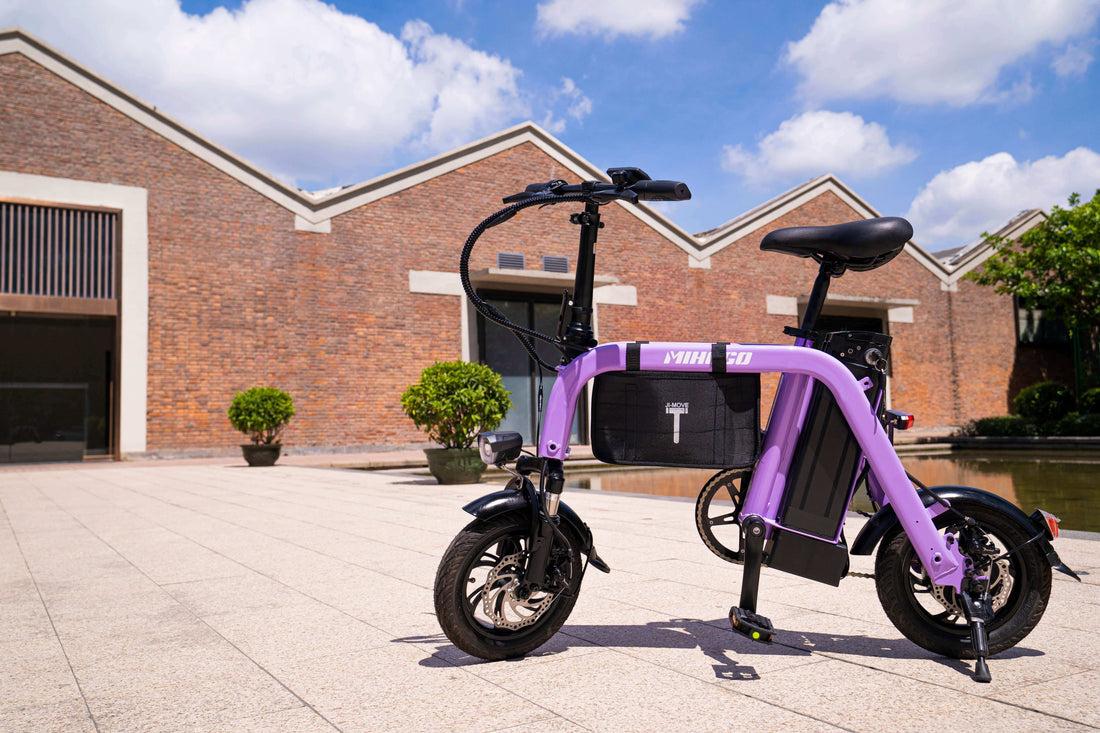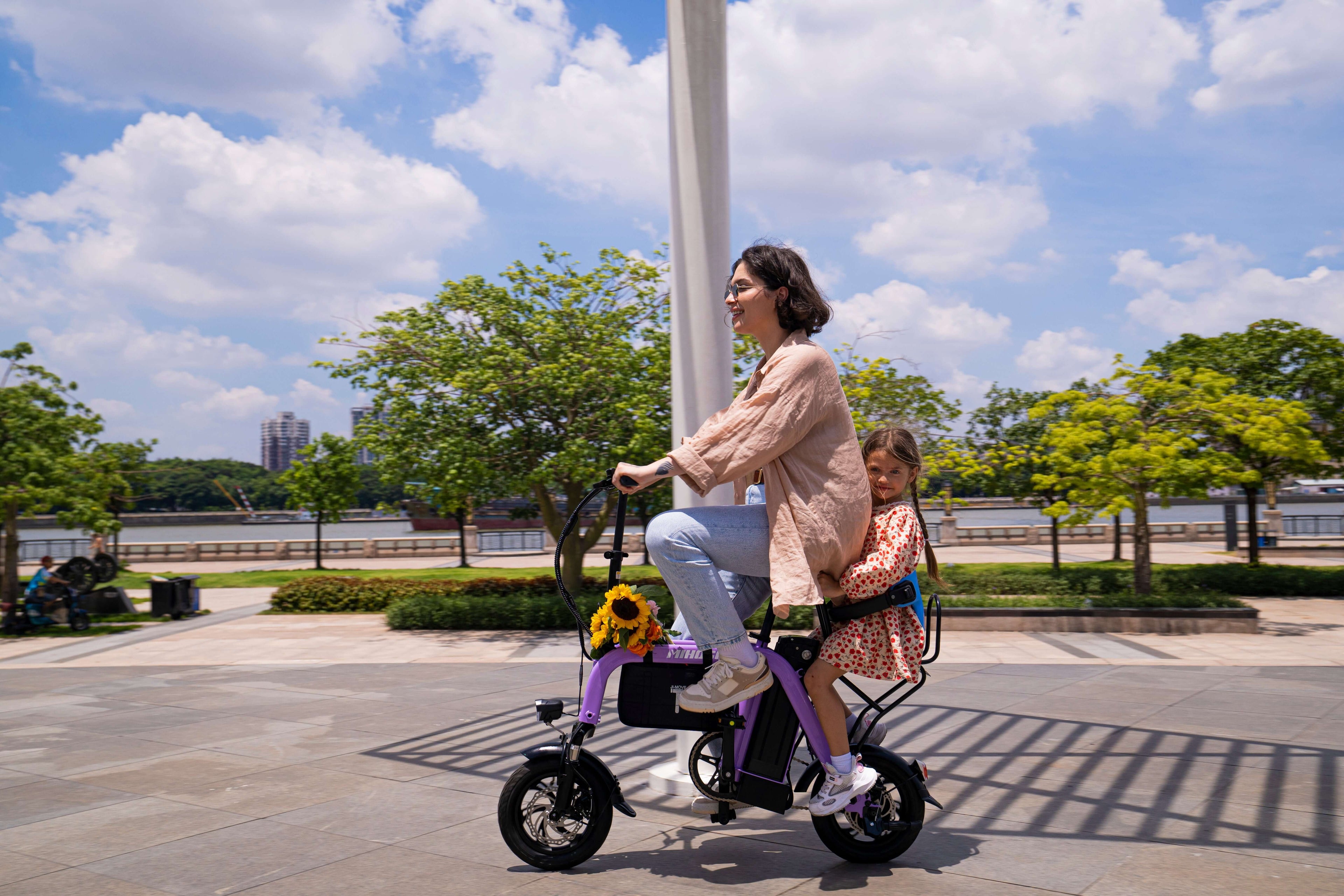The Growing Need for E-bike Battery Recycling
More than 12 million e-bikes will be sold in the U.S. between 2020 and 2030, meaning 12 million batteries will need proper collection and recycling. Your Mihogo e-bike, whether it's the powerful Air750 Max with its 121-mile range or the compact Mini with 62 miles of adventure-ready power, will eventually reach its end-of-life phase.
The typical lithium-ion battery in Mihogo e-bikes lasts 3-5 years with proper care, handling 500-1,000 charge cycles before performance begins to decline. Charging your battery correctly can extend its lifespan by 30%, but eventually, even the most well-maintained battery will need replacement.
Environmental Impact: Why Recycling Matters
The environmental stakes couldn't be higher. According to a 2025 Stanford University study, recycling batteries emits 58% to 81% less greenhouse gases, uses 72% to 88% less water, and uses 77% to 89% less energy than extracting virgin minerals.
When you responsibly recycle your Mihogo e-bike battery, you're preventing hazardous materials like lithium, cobalt, and nickel from contaminating soil and groundwater. These materials, if improperly disposed of in landfills, can cause severe environmental damage that lasts for decades.
The Circular Economy Revolution
Modern recycling facilities can now recover up to 95% of materials in lithium-ion batteries, transforming waste into valuable resources. Companies like Li-Cycle and Redwood Materials are pioneering technologies that make battery recycling not just environmentally responsible, but economically viable.
Mihogo Battery Specifications and Recycling Readiness
Each Mihogo model features lithium-ion batteries designed with future recycling in mind:
Mihogo Air750 Max (Carbon Fiber)
- 750W motor system
- 121-mile range capability
- Advanced lithium-ion technology optimized for longevity
- 750W power system
- Impressive 167-mile range
- Utility-grade battery construction for maximum durability
MIHOGO RX 2.4 (Commuter Folding)
- 500W efficient motor
- 40-mile urban range
- Compact battery design perfect for daily commuting
- 350W motor system
- 62-mile range in a compact package
- Lightweight battery construction
All Mihogo batteries are constructed with recyclable components and designed for easy removal when replacement time arrives.
The E-bike Industry's Recycling Leadership
The bike industry came together as the first transportation industry to establish a battery recycling program, creating the groundbreaking "Hungry for Batteries" initiative. This program, powered by Call2Recycle and endorsed by PeopleForBikes, has already recycled more than 36,000 pounds of batteries.
This collaborative approach demonstrates the e-bike industry's commitment to environmental stewardship, setting an example for other transportation sectors to follow.
Signs Your Mihogo Battery Needs Replacement
Recognizing when your Mihogo battery has reached end-of-life is crucial for maintaining optimal performance and planning for responsible disposal:
Performance Indicators:
- Reduced range compared to when new (e.g., your Air750 Max only achieving 80 miles instead of 121)
- Longer charging times than manufacturer specifications
- Battery not reaching full charge capacity
- Rapid power loss during rides, especially on inclines
- Physical signs of wear, swelling, or damage
When to Act: If your Mihogo e-bike's battery shows these symptoms after 3-5 years of use, it's time to explore battery replacement options and prepare for responsible recycling.
How to Recycle Your Mihogo E-bike Battery
Step 1: Locate Collection Points
Thousands of battery recycling drop-off locations exist from coast to coast. The easiest option is often returning to the bike store where you purchased your Mihogo, as many retailers participate in take-back programs.
Step 2: Prepare Your Battery
Before recycling:
- Discharge the battery to about 50% capacity
- Clean any dirt or debris from the exterior
- Keep the battery in its original housing
- Document the battery's specifications for tracking
Step 3: Professional Processing
Once collected, your Mihogo battery enters a sophisticated recycling process:
Disassembly Phase: Trained technicians safely dismantle the battery pack, separating cells and removing electronic components.
Material Recovery: Advanced processes extract valuable metals including lithium, cobalt, nickel, and manganese for reuse in new battery production.
Purification: Recovered materials undergo purification to meet manufacturing standards for new batteries and other products.
The Future of E-bike Battery Technology and Recycling
Emerging Technologies
The e-bike industry is rapidly evolving with sustainability at its core. Solid-state batteries are emerging with higher energy density, improved safety, and enhanced recyclability. These next-generation batteries will eventually power future Mihogo models, offering even better performance and simpler recycling processes.
Second-Life Applications
Before reaching full end-of-life, many e-bike batteries find new purposes in stationary energy storage systems, extending their useful life by several years. This "cascade utilization" maximizes the environmental benefit of each battery produced.
Enhanced Collection Networks
The recycling infrastructure continues expanding, making responsible disposal more convenient for Mihogo owners nationwide. New partnerships between manufacturers, retailers, and recycling companies are creating seamless collection systems.
Economic Benefits of Battery Recycling
Recycling isn't just environmentally responsible—it's economically smart. The global electric vehicle battery recycling market is projected to grow from $3.6 billion in 2024 to $24.9 billion by 2033, driven by the increasing value of recovered materials.
For Mihogo owners, this growth translates to:
- More convenient recycling options
- Potential trade-in credits for old batteries
- Lower costs for replacement batteries as recycled materials reduce manufacturing expenses
- Support for the circular economy that benefits everyone
Taking Action: Your Role in Sustainable E-biking
As a Mihogo e-bike owner, you're part of a community committed to sustainable transportation. Here's how you can maximize your positive impact:
Extend Battery Life:
- Charge regularly without fully depleting
- Store in moderate temperatures
- Follow Mihogo's maintenance guidelines
- Use official charging equipment
Plan for Replacement:
- Monitor your battery's performance trends
- Research local recycling programs
- Consider timing replacement before complete failure
- Stay informed about new battery technologies
Spread Awareness: Share information about responsible battery recycling with fellow e-bike enthusiasts, helping build a more sustainable cycling community.
External Resources for Continued Learning
For deeper insights into battery recycling technologies and environmental impact, explore these authoritative sources:
- EPA Battery Recycling Guidelines - Comprehensive federal guidance on proper disposal
- Call2Recycle Collection Network - Find local drop-off locations nationwide
- International Energy Agency Battery Report - Global perspectives on battery sustainability
Conclusion: Powering Forward Responsibly
The future of e-biking lies not just in advancing technology, but in creating closed-loop systems that minimize environmental impact. Your Mihogo e-bike represents more than personal transportation—it's part of a movement toward sustainable mobility.
By understanding battery lifecycles, planning for responsible recycling, and staying informed about emerging technologies, you're contributing to a cleaner, more sustainable future. The combination of Mihogo's quality engineering and your commitment to responsible ownership creates a powerful force for positive environmental change.
As the e-bike market continues its explosive growth, the recycling infrastructure will expand alongside it, making responsible battery disposal easier and more efficient. Your proactive approach to battery recycling today helps build the sustainable transportation ecosystem of tomorrow.








